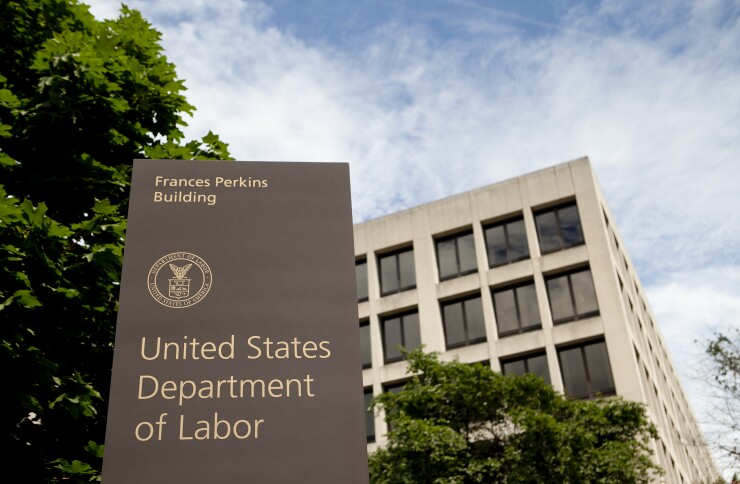Many think of the 1980s as a time of big business, big money and booming stock markets. The decade was epitomized by the fictional character Gordon Gekko, the famous insider-trading villain from the movie “Wall Street,” who declared “greed is good.”
As an employee benefits professional, particularly one who is focused on benefits administration and regulatory compliance, I look at the 1980s a little differently. I tend to focus on April 7, 1986. That’s when the Consolidated Omnibus Budget Reconciliation Act of 1985, better known as COBRA, was signed into law.

I’m not overstating it when I say COBRA has the ability to strike fear into the hearts of benefits administrators everywhere. That’s because penalties, related legal fees and expenses can be astronomical. Consider that COBRA imposes:
· A maximum $110 penalty per affected participant or beneficiary per day from the date when the noncompliance started
· Personal liability imposed on plan administrators
It is not unheard of for COBRA violations to cost a company millions of dollars plus attorney’s fees. Also an employer could end up paying for their ex-employees’ health coverage if premiums are collected improperly. HR staffers and others who administer COBRA in-house can be held personally liable for non-compliance.
That’s the downside of COBRA. The upside? It’s an employee-friendly piece of legislation that allows qualified workers to continue health insurance coverage after leaving employment. A “qualifying event” must take place in order for the employee to continue coverage. A qualifying event occurs when a covered employee dies, a voluntary or involuntary termination happens, or where there is a reduction of hours that results in the employee’s loss of eligibility for benefits under the plan. A qualifying event could also occur during a workforce strike, a divorce, or a dependent child reaching the age where they are no longer eligible for coverage.
Employees can continue coverage for up to 18 months, disabled employees may continue coverage for up to 29 months, and in the case of divorce or death of an employee, the spouse or dependent child may continue coverage for up to 36 months. COBRA does not apply if an employer terminated the plan or went out of business.
COBRA does not require the employer to pick up the tab for the cost of continuing coverage. State continuation coverage laws (often referred to as “mini-COBRA laws”) can also impose additional rules and requirements on employers.
If this isn’t confusing enough, the requirements for employer compliance are truly mind-boggling. It is not enough to offer ex-employees the ability to continue coverage. This information must be communicated on a timely basis, and failing to notify employees on time is what trips up many employers.
Notices (also called initial rights notifications) letting an employee know their rights under COBRA must be distributed to employees within the first 90 days of coverage. Generally, if a qualifying event does occur, the employer needs to notify the plan administrator within 30 days. An election notice must be given to the qualified beneficiary 14 days after the plan administrator receives the qualifying event notice. If the employer and the plan administrator are the same entity, then 44 days is the maximum time period. Each qualified beneficiary must get at least 60 days to decide whether to continue coverage. If they do continue coverage, the employer is responsible for collecting their premium. If the ex-employee does not pay the initial premium within 45 days, coverage can be terminated.
Coverage also terminates if the ex-employee doesn’t pay in a timely way and the grace period elapses. The employer must also track the timeframes that ex-employees are on COBRA. What’s even trickier is worrying about special exceptions like second qualifying events and disability determinations. Dealing with ex-employees can be contentious too.
Yes, I know, this is enough to make your eyes spin in their sockets.
With so much at stake, I always recommend not to administer COBRA using in-house resources. There are many third-party COBRA administrators that offer inexpensive solutions to alleviate this burden on HR and benefit support personnel.
“While many favor the protections COBRA offers to employees, the law is very complex.”
However (and this is a big however), the risk of noncompliance doesn’t end with a third-party administrator, which means the employer is liable for missed notification deadlines, etc. Proper set-up with the COBRA administrator is imperative. Because the administrator will handle the billing, it is important they have the correct plan and rate information. It is also imperative that the employer communicates qualifying events to the administrator. There are some great benefits administration platforms in the market that handle sending Electronic Data Interchange (EDI) file feeds to the COBRA administrator. Even then, it is critical to ensure feeds are occurring timely and accurately.
While many favor the protections COBRA offers to employees, the law is very complex, very difficult to administer and fraught with risk. Mistakes can happen, and if they do, the responsibility always lies with the employer.





